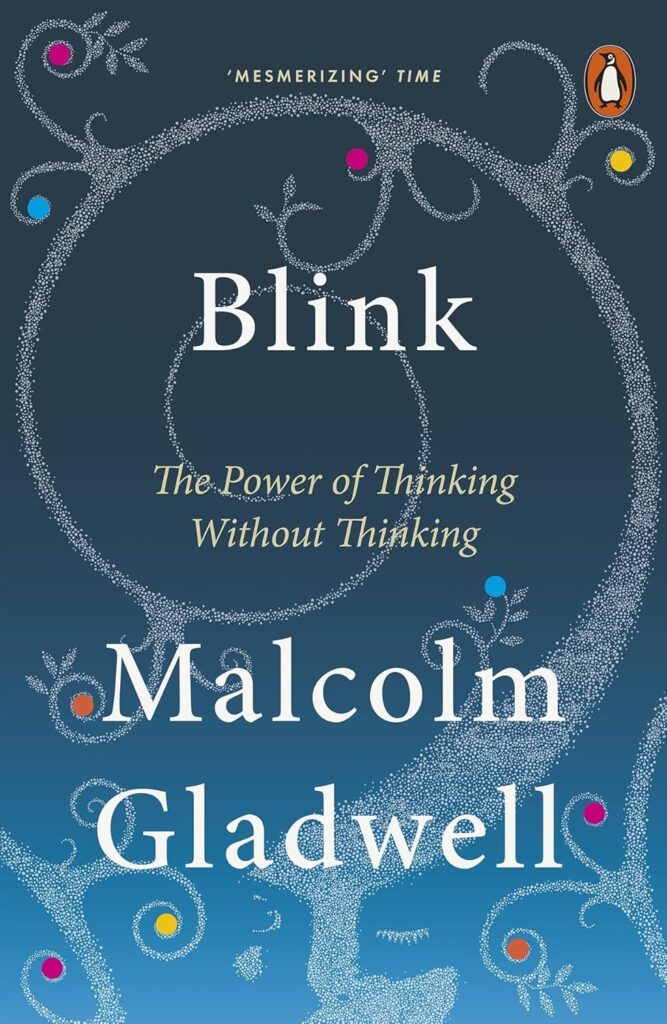
“We don’t see people as they are — we see them as our instincts tell us they should be.”
(A paraphrase of a central idea in Malcolm Gladwell’s Blink)
I’m late by a day… but I’m here — and that counts. One small step forward still counts. Especially when it’s toward showing up thoughtfully and with purpose.
This week’s post is based on a book I’m reading — Blink by Malcolm Gladwell — just after a few chapters, my mind feels awake and shaken!
At its heart, Blink explores how we make snap judgments — often within seconds — based on subtle cues: appearance, tone, body language, presence. These “thin slices” shape our perceptions long before facts have a chance to speak.
One chapter stands out: the Warren Harding Error — where Gladwell reveals how Americans misjudged one of their most famously ineffective presidents simply because he looked like a leader: tall, handsome, confident.
And the data? It’s chillingly consistent: among Fortune 500 CEOs, men average just under six feet — significantly taller than the U.S. male average of five feet nine. That gap isn’t random. It’s bias dressed as instinct.
So I wondered: Does this hold in the UK?
I searched for public data on CEO height — only to realise: height is personal information. Not tracked or disclosed at scale. No official records exist.
But what did surprise me was this:
Even today — nearly two decades after Blink was published — people are still sharing those same statistics on LinkedIn and social media… as if they’re from recent original research. Some posts frame it as a “new insight,” complete with charts and hashtags — yet cite no source.
Not Gladwell. Not even a hint of context.
📌 Let’s be clear: sharing insights is powerful. But presenting old ideas as new — without credit — undermines trust. And worse, it lets myths circulate unchallenged.
Now imagine the real cost:
- A short man walks into a room already judged before he speaks.
- A woman who is shorter and underrepresented in leadership faces double bias — not just gender, but perception shaped by outdated stereotypes.
- The “confidence spiral” begins early: tall individuals get more eye contact, better opportunities, quicker promotions — which then reinforces their confidence. It becomes self-fulfilling.
- Meanwhile, others must work twice as hard to prove themselves — overcoming assumptions rooted not in reality, but in the blink of an eye.
We’ve all been told: “Walk tall.”
But why?
Is it really about posture? Or is it about signalling — subtly reminding ourselves (and everyone else) that we belong at the table?
That question haunts me now.
Because in my world — energy systems, innovation, decarbonization — we need diverse minds, not dominant silhouettes. We need engineers who think differently, scientists unafraid to challenge norms, leaders driven by empathy and vision — not just presence.
So let’s reframe this:
Let’s stop mistaking appearance for ability.
And when we share ideas online — whether on LinkedIn or in blogs — let’s give credit where it’s due. Because knowledge grows strongest not through repetition, but through honesty.
🔍 But here’s what Blink teaches us — and why it matters even more:
Gladwell isn’t saying: “Never trust your gut.”
Nor is he saying: “Always trust first impressions.”
He’s making a much subtler, far more valuable point:
✅ Trust your intuition — but only in areas where you have deep expertise.
❌ Question your instincts — especially when you’re outside your domain.
Think of it like this:
A firefighter senses danger seconds before flames become visible — because years of training have wired their brain to recognise patterns others miss. That “gut feeling”? It’s an experience in disguise.
But the same fire chief might walk into an executive meeting about renewable policy and instantly assume someone “looks unqualified” based on age or accent. And that snap judgment? Likely wrong. Untrained. Biased.
That’s the duality Gladwell reveals: fast thinking can be brilliant — or dangerously flawed, depending on context.
So as professionals — especially those shaping complex systems like energy transition, transport innovation, or climate policy — we must ask:
- Am I relying on pattern recognition from real experience?
- Or am I projecting assumptions rooted in stereotypes?
In my work at PNDC, I’m constantly balancing data-driven modelling with creative leaps — guided by both rigour and intuition. But I know that instinct only works when grounded in learning, experimentation, and humility.
💬 Final Thought:
The truth isn’t always found in data alone — sometimes, it’s hidden in how we interpret it.
Malcolm Gladwell once wrote something close to what I paraphrased earlier:
“In the blink of an eye, we form judgments — often without realizing it.”
And he reminds us:
“Our instincts aren’t always wrong — but they’re not always right either.”
So next time you meet someone new — pause.
Not to size them up…
but to ask:
Am I judging this person because I truly understand their domain? Or because I’ve fallen for a shortcut — a bias dressed as insight?
Stay curious. Stay kind. And keep showing up — even if it’s just one day late.
P.S. I might write more about other powerful insights from Blink later — especially how expertise shapes perception, why diversity strengthens rapid decisions, and how to train your “blink” to be smarter than your biases.
Until then —
With warmth,
Priya

